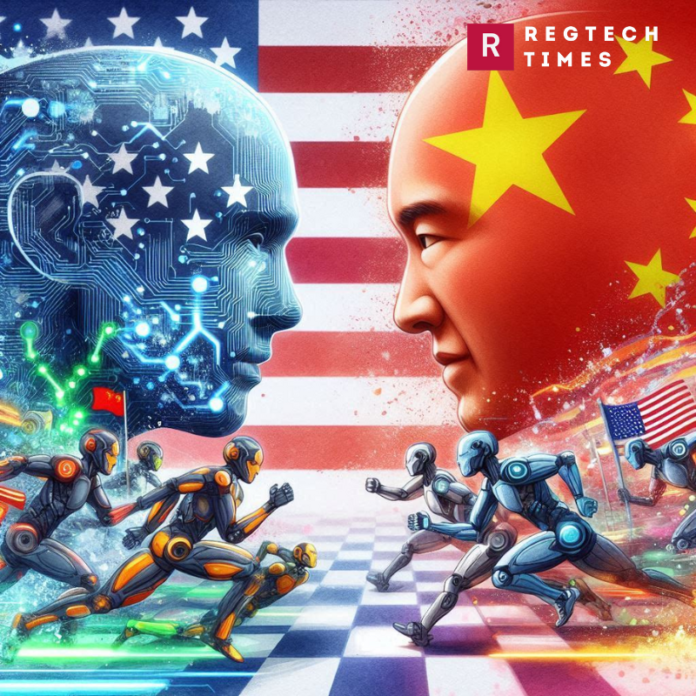The Chinese tech landscape is no stranger to price war with US, with industries ranging from electric vehicles to bubble tea frequently engaging in fierce competition. The latest arena for this economic phenomenon is artificial intelligence (AI), specifically in the development of large language models (LLMs). Understanding the dynamics of this price war and its implications is crucial for the United States, both from an economic and strategic standpoint.
The Rapid Emergence of Chinese LLMs
Until recently, China lagged significantly behind the United States in the development of advanced LLMs, which are essential for creating sophisticated AI chatbots like OpenAI’s ChatGPT. However, this gap has rapidly narrowed. Experts now believe that Chinese LLMs are only about a year behind their American counterparts. Notably, several Chinese models rank among the top 20 in the world, with some outperforming the version of ChatGPT that existed before its May 2023 upgrade.
The swift progress has led to substantial revenue growth in the Chinese LLM market. Market research firm AskCI predicts that revenue from Chinese LLMs will reach 22 billion yuan ($3 billion) this year, up from 15 billion yuan in 2023, with projections suggesting a fivefold increase by 2028.
The Price War Unfolds
The technological advancements and financial prospects have spurred numerous Chinese firms to enter the AI race. With over 100 models boasting more than a billion parameters, the market is flooded with offerings. Unlike the U.S., where OpenAI holds a clear technological lead, the Chinese market lacks a dominant player, leading companies to compete primarily on price.
In May 2023, High-Flyer, a quant hedge fund, dramatically slashed prices for its latest model to one-hundredth of one yuan cent per 1,000 tokens, about 1% of OpenAI’s charges for GPT-4 Turbo. This triggered a domino effect, with major players like ByteDance, Alibaba, Baidu, and Tencent all cutting their prices drastically. The fierce competition has been dubbed “the war of a hundred models,” and it threatens to squeeze out smaller, innovative firms.
China Defiantly Unfazed by AI Chip Sanctions Imposed by US, Sets Up $47.5 Billion Fund
The Implications of the Price War
The price war is likely to lead to the consolidation of the Chinese AI industry. Smaller firms, despite their potential for innovation, may be driven out, leaving the market dominated by a few giants such as Alibaba, Baidu, ByteDance, and Tencent. This mirrors trends in other tech sectors where scale and capital are crucial for survival and growth.
While competition generally fosters innovation, extreme price wars can stifle it. Reduced revenues mean less investment in research and development (R&D), crucial for maintaining a technological edge. For the U.S., this could mean a slower rate of groundbreaking advancements from China, but also less direct competition from new, disruptive Chinese startups.
American Sanctions
U.S. sanctions preventing Chinese firms from accessing advanced American-made AI chips exacerbate the situation. These sanctions limit the computational power available to Chinese AI developers, potentially slowing their progress. However, this also pushes Chinese companies to innovate domestically, possibly leading to self-sufficiency in critical technologies, which could shift the global tech landscape in the long run.
US Restrictions on AI Chips is Innovative Mechanism of Sanctions on China
Some Chinese firms may turn to international markets to escape the domestic price war. This could introduce new competitors in regions currently dominated by American and European AI firms. For U.S. companies, this means preparing for new challenges in international markets and understanding the unique strengths and weaknesses of Chinese LLMs.
China Skirts US Sanctions; Oracle is Powering Tiktok with Nvidia AI Chips
Strategic Importance for the USA
The rapid advancement of Chinese AI technologies poses a direct challenge to U.S. dominance in the sector. Staying informed about these developments allows American firms and policymakers to strategize effectively, ensuring that the U.S. maintains its competitive edge.
AI technologies have significant implications for national security, from cybersecurity to military applications. Monitoring China’s AI capabilities helps the U.S. anticipate potential risks and develop appropriate countermeasures.
The U.S. needs to carefully balance its trade and sanctions policies. While restricting access to American technology can slow Chinese advancements, it may also encourage China to develop independent capabilities, which could eventually reduce American influence over global tech standards.
The U.S. can learn from the Chinese experience. Encouraging healthy competition without leading to destructive price wars can foster a more sustainable innovation ecosystem. This means supporting not only large tech giants but also smaller, innovative startups.
Microsoft President Brad Smith Testifies on Cybersecurity Failures Leading to Chinese Attacks
The ongoing price war among China’s AI-model builders is a significant development with far-reaching implications. For the United States, understanding this phenomenon is essential for maintaining economic competitiveness, ensuring national security, and crafting effective trade policies. By keeping a close eye on China’s AI advancements and market dynamics, the U.S. can better navigate the complex and rapidly evolving global tech landscape.


